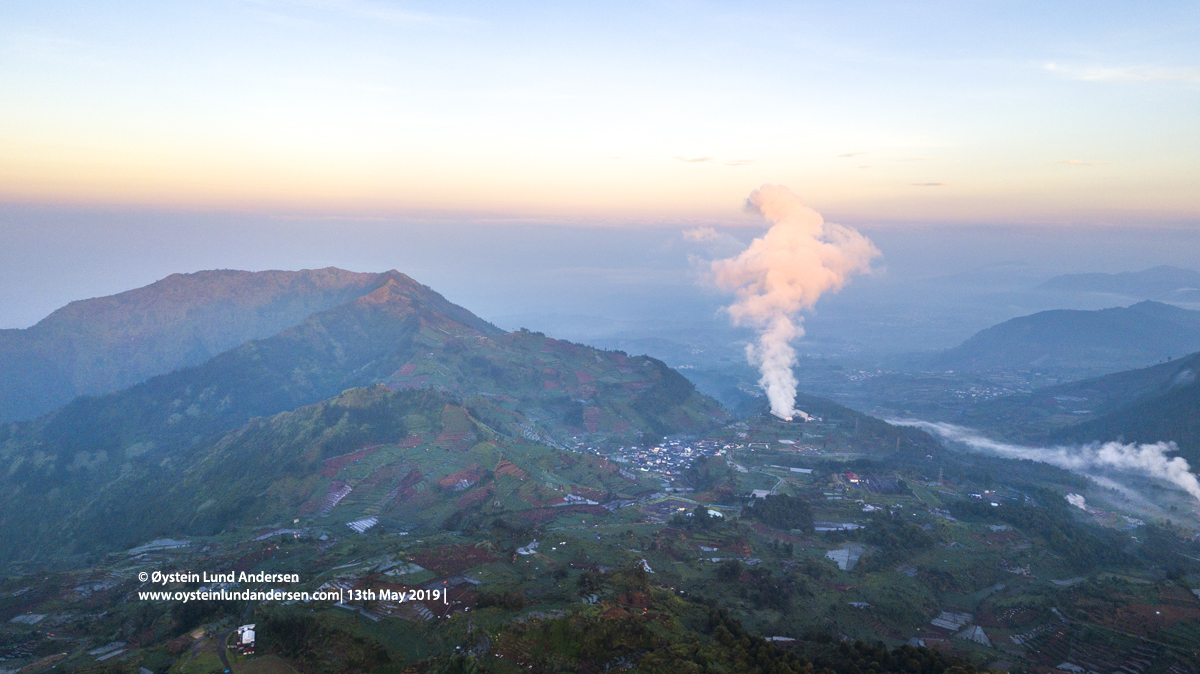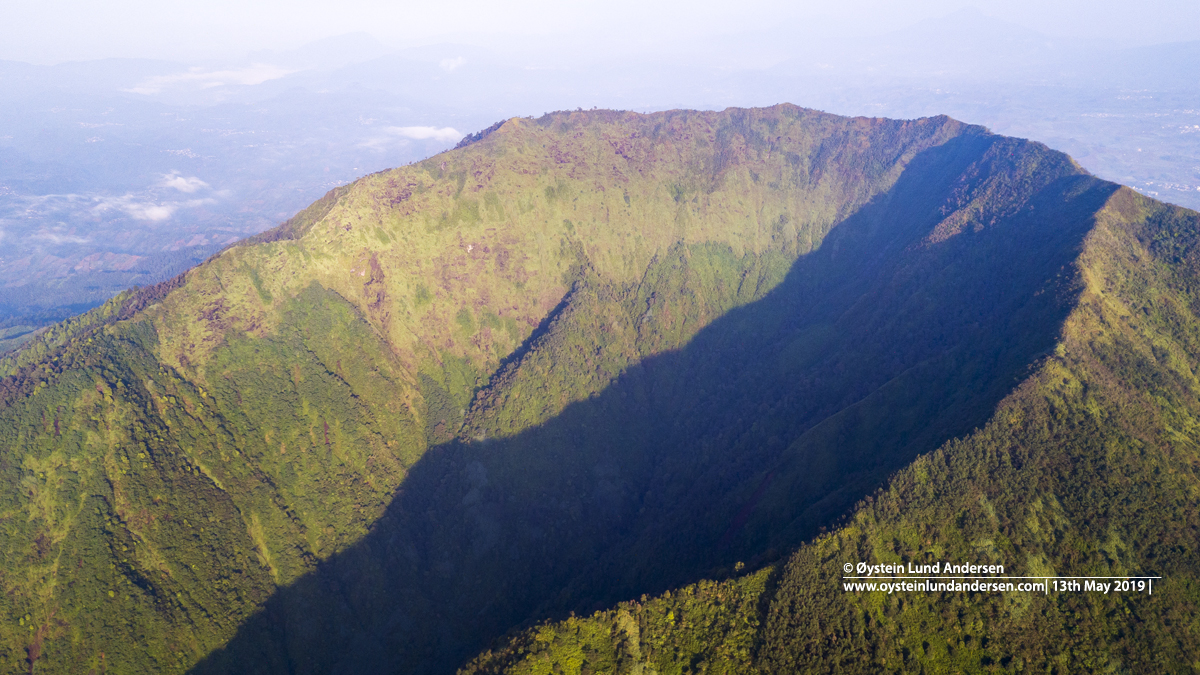The Dieng Plateau, or the The Dieng Volcanic complex, consists of two or more stratovolcanoes and more than 20 small craters and cones of Pleistocene-to-Holocene age over a 6 x 14 km area. There are
numerous surface manifestations of hydrothermal activity, including lakes, fumaroles/solfatara and hotsprings. The last magmatic (as of 2019) eruption, thought to have occurred in the Dieng Volcanic Complex was at the Pakuwaja cone, during a eruption in 18th Century.The area is also known for the development of geothermal resources and lethal outbursts of gas. Scattered temples are the witnesses of the ancient Hindu culture that once reigned.
References/source used in this article:
-Crater lakes of Java: Dieng, Kelud and Ijen, Excursion Guidebook IAVCEI General Assembly, Bali 2000
-Eruptive History of the Dieng Mountains Region, Central Java, and Potentian Hazards from future Eruption. Open-File report 1983. USGS/PVMBG.
-Wikipedia
Bisma
Bisma (sometimes also spelled Bismo), situated on the southern edge of the Dieng Plateau. The crater is breached to the SE, maybe caused by some kind of collapse. In Sanskrit, the word `Bhishma` means ‘one who undertakes a terrible vow (bheeshma pratigya) and fulfills it.’ Maybe Bisma did something in the past human-history to deserve its name? I have not found much research done on this volcano.


